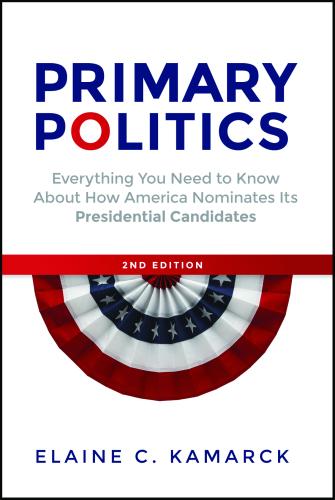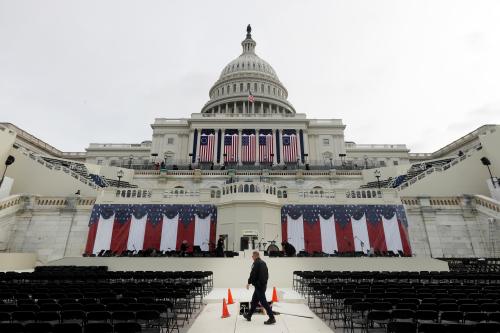It has been a year since Donald Trump was elected president, surprising most of the world and many of his supporters. Since then we have witnessed a president unlike any we have ever seen before; combative, unpredictable, uneducated in the substance of policy and consumed with himself. Can the presidency according to Donald Trump survive? Answering that involves looking back one year to election day and looking forward one year to the midterm elections.
Looking back…
In between the primaries where Trump won 14 million votes and the general election where he won almost 63 million votes, Donald Trump picked up around 49 million voters. Some of them knew Trump was trouble but thought Hillary Clinton was worse. Others thought Trump’s more outlandish campaign behavior was just an act and that he would settle down in the job of president.
So did he?
Not really. We now know that Trump runs his presidency through tweets. He picks fights even when it isn’t in his own self-interest. Among the many strange things he’s done in his first year is to antagonize Republican Senators even though he needs their votes on legislation—and even though they are the only group of people in the country who have the power to acquit him should he face an impeachment trial.
By and large, the first year of his presidency has been nothing but one big self-inflicted wound. He failed to enact any of his big campaign promises, he got himself accused of obstruction of justice (an impeachable offense), he fanned the conspiracy flames around his relationship with Russia, he insulted and contradicted his staff, made enemies of allies, and sent a series of conflicting messages on policy. He has record-low approval ratings for this point in any presidency in the modern era and he has already provoked discussions of impeachment. A mere four months into Trump’s term and the “I” word (impeachment) was already in play.
Trump may talk like a dictator but the Constitution is working just as it should to prevent him from behaving like one.
And yet, in spite of his chaotic management style, his bizarre tweets, his delight in insulting people and his constant attacks on the norms of American democracy—such as freedom of the press and respect for the courts—the American constitutional system is doing what it was designed to do: check power. The press is not afraid of him—after all, he makes for good copy regardless of what he is doing, even if it’s attacking them. The courts are not afraid of him—they have turned down his immigration orders three times and indicted his campaign manager. Some Republican members of Congress, including Senators Bob Corker (R-Tenn.) and Jeff Flake (R-Ariz.), have been overtly critical. But while others have not followed suit in their public remarks, they have stopped his efforts to repeal Obamacare and have passed (by an overwhelming vote) legislation tying the president’s hands when it comes to lifting Russian sanctions. Trump may talk like a dictator but the Constitution is working just as it should to prevent him from behaving like one.
There is some indication that the Trump presidency is settling into a pattern. Trump says something incendiary in a tweet or in an interview and then one or more person in his administration “interprets” what he meant. People (including our foreign adversaries) are learning to take a deep breath and wait for the “interpretation” before acting. The foreign policy team has been following this model more or less since the Munich Security Conference. There, they reassured NATO Allies that the U.S. would stand by Article 5 of the NATO Treaty, only to have to do so again a few months later after the president unexpectedly cut the customary reassurance from his speech in Brussels. Although Trump has made our allies nervous, American policy has remained the same.
Finally, as we’ve seen in this first year, sometimes the president is simply ignored by his own team. His latest suggestion, that the Republicans add repeal of Obamacare to the tax bill was, like his budget, not taken seriously—or as they say on the Hill, DOA (dead on arrival). The Republicans will have enough trouble passing their tax bill without adding an entirely new issue that has already lost them votes. His repeated attempts to get funding for his Mexican border wall have also been ignored. The number of times members of his own Cabinet have contradicted him, on everything from the Iran deal to Puerto Rico’s debt, is astonishing.
And yet, in spite of a presidential performance that is, to put it mildly, less than optimal, Donald Trump seems to be holding his own with the Republican Party. While his approval ratings are abysmal among Democrats and Independents, they remain strong among Republicans. And it should be duly noted that when Senators Corker and Flake launched broadsides against Trump in the press, they did not trigger an avalanche of similar comments from other Republicans.
Looking forward…
Which brings us from last year to next year.
The first real test of the Trump presidency will occur a year from now in the midterm elections. Until then, we can only speculate on the effect of the Trump presidency. The judgement rendered in 2018 will be made in the context of historical trends. A sitting president’s party almost always loses seats in the House of Representatives in the midterm elections. In fact, the average in the post-war era has been 30 seats lost in the House and four seats lost in the Senate. In some years, when the midterm receives particular attention at the national level—usually because it is framed as a referendum on the president—the midterm becomes a “wave” election and the president’s party loses an even larger number of seats. Presidential popularity can affect the number of seats lost, though the relationship is not exact. For instance, in the 1946 midterms, a very unpopular President Harry Truman lost a whopping 45 seats in the House and 12 seats in the Senate. President Barack Obama lost even more in 2010—63 House seats and six Senate seats.
So what does 2018 look like so far?
Democrats need to pick up 24 seats to gain control of the House. Historically this likely would have been easy, but Republican ability to gerrymander districts over the past decade has created fewer competitive districts. Nonetheless, there are some early signs that should make Democrats optimistic about the next year.
First is the sheer number of Democratic candidates running. As Michael Malbin has pointed out in these pages, there are 455 Democratic challengers running in 2017 and only 111 Republican challengers. This is an indication that Democrats on the ground think 2018 will be a good year for them and Republicans don’t. Moreover, a significant number of those challengers already have healthy bank accounts, a sign that there are many experienced Democratic candidates running in 2018. As the following chart from Malbin indicates, there are more Democratic challengers in Republican House districts that have raised at least $50,000 than in any prior midterm going back to 2003.

All in all, Democrats in 2017 are looking as good or better than Republicans did in 2009 before their big wins in the 2010 midterms. But Trump has the advantage of a very healthy economy; unemployment is low, the stock market is high, and, perhaps most importantly, middle-class incomes are up and the poverty rate is down.
And, let’s face it, Americans are getting used to the reality TV show that is the Trump presidency. So far, his desires to be a dictator are unfulfilled; so far, he has not gotten us into a war; and so far, there is no proof that he colluded with Russians during his campaign. If these things remain, the 2018 verdict on Trump’s presidency may not be as bad as Democrats hope and Republicans fear.









Commentary
The Trump presidency: Looking back one year and forward one year
November 6, 2017